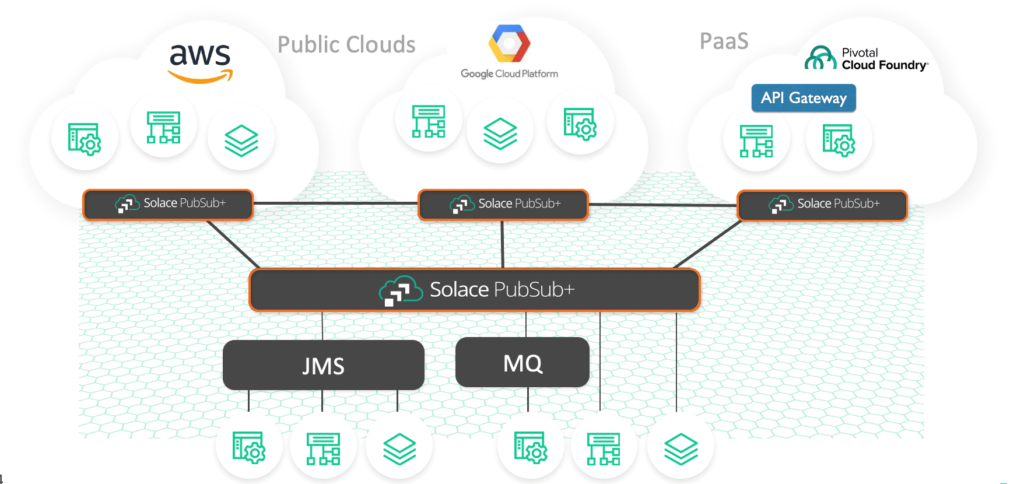Businesses today recognize that there is an unprecedented opportunity in front of them if they can harness technologies like cloud, data analytics, IoT, AI, robotics, blockchain, AR in order to respond to market changes in real-time.
These disruptive innovations are not just accelerating digital transformation and revolutionizing customer expectations, but causing companies to pivot into entirely new business models built around hyper-personalized products and truly interactive services.
With disruptions affecting every sector, digital transformation is really not a choice, but a necessity — to survive and thrive they simply must transform to keep up with evolving technologies, adapt to continuous change, and seize short-lived opportunities that emerge.
However, to realize the benefits of these technological innovations, they must overcome the inevitable: resistance to change.
As business leaders strive to reshape their businesses, some of the key questions they seek answers to include:
- How can I shorten the time from the inception of a new business idea to launching the initiative?
- How can I deliver improved customer experience and gain customer loyalty?
- How can I improve the operational intelligence of the business to make quick and informed decisions?
For IT leaders, all of these questions lead to answers that make them think one thing: We need to to modernize our infrastructure!
Although cost reduction alone can spur modernization initiatives, there are plenty of other reasons it is important.
What Does Modernization Actually Mean?
Modernization means something unique to each organization. Any one or more of these drivers could be the reason for your modernization initiatives.
- IT Consolidation: shed costly and outdated legacy systems and replace them with IaaS, PaaS or SaaS
- Cloud Adoption: move existing on-premises applications to the cloud with low risk or adopt cloud-native applications
- Multi Cloud/Hybrid Cloud: connect legacy applications to new Saas services.
- IoT Connectivity: connect to mobile and IoT devices to get sensor readings
- Events as First-Class Citizens: Move to microservices or event driven architectures to improve agility and scaling.
- Data Analytics and Insights: streaming data to data lakes to yield for accurate data insights to drive decision making and operational intelligence.
Although the drivers for modernization may be different, the end goal remains the same for all: to build a more agile, customer centric, and data-driven business.
Where Modern Middleware Technology Fits In
Middleware glues enterprise apps and services together and is an integral part of modernization initiatives. Cloud-first strategies are demanding a lot from middleware these days and legacy middleware platforms were just not built to address the needs of the modern, dispersed hybrid IT landscape.
As such, a lot of enterprises are turning to iPaaS as a catch-all solution. However, an iPaaS alone will not be ideal for all situations, especially those where interactions between applications and services are RESTful request/reply communication. The tight coupling and synchronous nature of RESTful communications is not scalable for large enterprise deployments.
Some iPaaS solution providers include basic messaging functionality like queueing and guaranteed messaging, but do not support all enterprise-grade features and message exchange patterns. To fill the gaps, you again end up building tactical solutions leveraging cloud native technologies and over time the architecture again becomes complex, heterogenous, and difficult to maintain.
My colleague Jesse Menning recently wrote a series of whitepapers addressing the real-time challenges with iPaaS how to overcome them with event-driven integration as well as how to implement it in 4 detailed steps. In addition, the whitepaper The Time to Modernize your Middleware is Now is a paper that discusses the value of modernizing your middleware and provides guidance towards garnering support from decision-makers in your organization. I highly recommend giving all of them a read.
So, what is the ideal foundational layer to support your middleware modernization? The answer is an event mesh.
A Single Unified Platform for the Distributed Enterprise
An event mesh (an architectural layer of interconnected event brokers) uniquely enables event-driven microservices, supports IoT and mobile use cases, and integrates easily with modern iPaaS, PaaS, and API gateway technologies. It enables you to stream events across your organization and IoT assets to applications and services that need them regardless of the protocols and APIs they use and where they are located (on-premises, private cloud, and/or public cloud).
An event mesh has been proven to allow:
- Faster time to market and continuous innovation: since an event mesh enables event-driven communication, it also supports event-driven microservices, which allow developers to create and implement new functionality faster without impacting existing services.
- Seamless customer experience: access to real-time data means improved real-time responsiveness to the customers, resulting in an improved customer service.
- Improved operational intelligence: rather than waiting for traditional batch or file-based processing, an event mesh enables real-time access to events.
Be it events from your IoT sensor devices, your factories, product line management system, or quality management system, having access to vital events in real-time enables decision-makers in your enterprise to be informed as quickly as possible when making decisions that will impact the whole business.
To learn more about the Solace enabled event-mesh with PubSub+ event brokers, check out this video:
What to Look for in an Event Broker and Supporting Systems
It is important to understand that the technology choices you make today can make or break your modernization efforts for years to come. Since it’s so critical to get your middleware modernization off on the right foot, make sure your event brokers and other tools support these advanced capabilities, even if you don’t need them today:
- Simple to deploy, and easy to integrate with your legacy ESB.
- Supports phased migration to the cloud by connecting old legacy apps with new modern SaaS applications.
- Capable of dynamic message routing or unified connectivity and broker federation to enable an event mesh across clouds for your multi-cloud or hybrid cloud use cases.
- Sophisticated message routing via hierarchical topics and wildcard subscriptions for WAN bandwidth optimization.
- Open API and protocol support for your IoT use cases
- Support for the publish-subscribe messaging pattern for event-driven microservices and event-driven architecture to improve agility and scaling.
- Ability to stream events to data lakes for faster and accurate data insights.
- Replay, shock absorption, robust security, HA, and disaster recovery.
- Single pane of glass management for deploying, managing, and monitoring your event brokers.
- Design, creation, and run-time visualization, discovery, and governance of events.
Conclusion
To set yourself up for success, start the process of modernization by keeping an eye out for what’s next. Take a holistic approach to your modernization efforts and not just modernizing in parts. Choosing technologies that are not just modern but future-proof will help you stay ahead of the game!
Explore other posts from category: Company

 Meshvi Patel
Meshvi Patel

